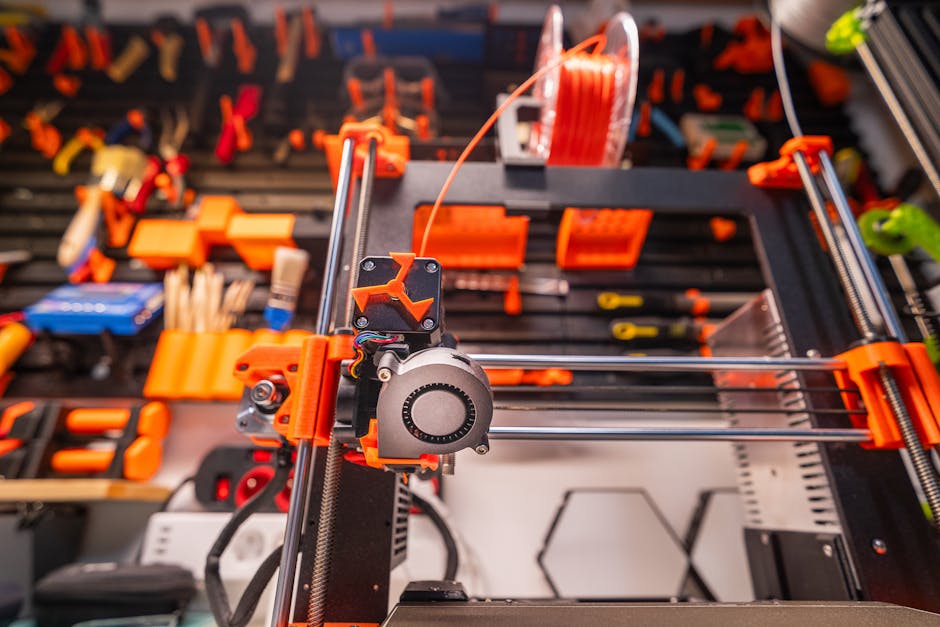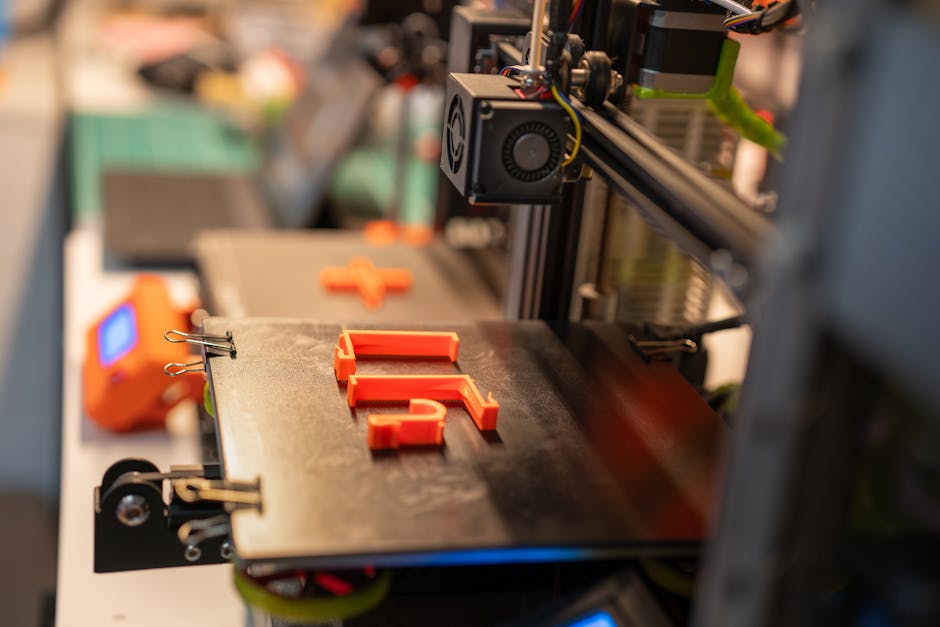3D Printing in Manufacturing: Applications, Benefits, and Future Trends
As you explore 3D printing in manufacturing, you’ll find it’s transforming industries like aerospace and healthcare with lightweight components and customised prosthetics. Additive manufacturing brings benefits like reduced material waste, energy consumption, and production time, leading to cost savings and improved product performance. In production lines, it enables on-demand production, simplified supply chains, and complex geometries. Emerging trends include bioprinting, virtual prototyping, and artificial organs. While challenges exist, such as material constraints and scalability issues, the technology’s vast potential is undeniable. Now, dive deeper into the world of 3D printing in manufacturing to uncover its full possibilities.
Key Takeaways
• 3D printing transforms industries like aerospace and healthcare by creating complex components, custom prosthetics, and personalised medicine.• Additive manufacturing offers benefits like reduced material waste, cost savings, and simplified supply chains.• 3D printing enhances production lines with on-demand production, customisation, and reduced supply chain complexity.• Emerging trends in 3D technology include bioprinting, virtual prototyping, and creating complex geometries and artificial organs.• Overcoming challenges like material constraints, post-processing complexities, and scalability issues is crucial for widespread 3D printing adoption.
Industries Transformed by 3D Printing

As 3D printing technology continues to advance, it’s transforming industries such as aerospace, automotive, and healthcare by enabling the rapid production of complex parts, tools, and products with unprecedented precision and accuracy.
You’re likely familiar with the significant impact 3D printing has had on the aerospace industry, where it’s being used to produce lightweight, complex components for aircraft and spacecraft. Aerospace advancements have led to reduced fuel consumption, increased efficiency, and improved overall performance.
In the medical field, 3D printing has led to groundbreaking medical breakthroughs. You’ve probably heard about custom prosthetics, implants, and even organs being printed layer by layer. This technology has opened up new possibilities for personalised medicine, allowing doctors to create tailored treatments for individual patients.
For instance, surgeons can now print exact replicas of organs to practise complex surgeries, reducing the risk of complications during actual operations. Additionally, 3D printing enables the rapid production of medical devices, such as custom implants, splints, and surgical models, which has revolutionised healthcare.
As you explore the applications of 3D printing, it’s clear that these advancements are transforming industries in profound ways, driving innovation and improving lives.
Benefits of Additive Manufacturing

By leveraging additive manufacturing, you can reduce material waste, energy consumption, and production time, while increasing part complexity, customisation, and overall product performance.
This is achieved through the layer-by-layer deposition process, which eliminates the need for moulds, tooling, and other production-related expenses. Consequently, you can enjoy significant cost savings, which can be reinvested in research and development, marketing, or other areas of your business.
Another key benefit of additive manufacturing is its ability to simplify and streamline your supply chain. With the capability to produce parts on-demand, you can reduce inventory levels, minimise storage needs, and eliminate the risks associated with inventory obsolescence.
This, in turn, enables you to respond quickly to changing market demands, reduce lead times, and improve customer satisfaction.
Furthermore, additive manufacturing allows for the creation of complex geometries, lattice structures, and internal features that can’t be produced through traditional manufacturing methods.
This enables the development of innovative products with improved performance, reduced weight, and enhanced functionality. By leveraging these benefits, you can stay ahead of the competition, increase market share, and drive business growth.
3D Printing in Production Lines

You can seamlessly integrate 3D printing into your production lines to increase efficiency, flexibility, and customisation capabilities, while reducing lead times and costs. By doing so, you can optimise your production process, making it more agile and responsive to changing customer demands. This integration enables you to produce complex geometries, reduce material waste, and minimise the need for assembly.
Improved Production Efficiencies: 3D printing enables you to produce parts on-demand, reducing inventory and minimising the need for storage space.
Enhanced Customisation: With 3D printing, you can create customised products with complex geometries, tailored to specific customer needs.
Reduced Supply Chain Complexity: By producing parts locally, you can reduce reliance on external suppliers, minimising logistics costs and lead times.
Increased Product Quality: 3D printing enables the production of high-precision parts with complex internal structures, ensuring superior product quality.
Cost Savings: 3D printing reduces material waste, energy consumption, and labour costs, resulting in significant cost savings.
Emerging Trends in 3D Technology

As you venture into the world of 3D printing, you’ll discover that advancements in this technology are driving innovation, enabling the development of novel materials, processes, and applications that are poised to revolutionise industries and transform the manufacturing landscape.
One of the most promising emerging trends is bioprinting, which involves the creation of living tissue and organs using 3D printing techniques. Bioprinting advances have the potential to revolutionise healthcare, enabling the creation of artificial organs for transplantation, and even facilitating the development of personalised medicine.
Another exciting trend is the rise of virtual prototyping, which allows designers and engineers to test and refine their designs in a virtual environment before physical production. This approach enables the identification and correction of design flaws earlier in the development process, reducing the need for costly physical prototypes and accelerating product development.
Virtual prototyping also enables the creation of complex geometries and custom products, further expanding the possibilities of 3D printing.
As you explore the world of 3D printing, you’ll discover that these emerging trends are just the tip of the iceberg. With continued advancements in 3D printing technology, you can expect to see even more innovative applications and uses emerge in the future.
Overcoming Challenges and Limitations

Despite its vast potential, 3D printing technology still grapples with several challenges and limitations that hinder its widespread adoption in manufacturing, including issues with scalability, material properties, and post-processing requirements.
As you navigate the world of additive manufacturing, you’ll encounter these hurdles that can slow down your production and increase costs.
Material constraints: Limited material options and properties restrict the range of products you can create, making it difficult to meet specific requirements.
Post-processing complexities: Time-consuming and labour-intensive post-processing steps, such as machining, grinding, and finishing, add to the overall production time and cost.
Scalability issues: 3D printing technology struggles to match the speed and volume of traditional manufacturing methods, making it challenging to scale up production.
Lack of standardisation: The absence of standardised processes, materials, and equipment creates inconsistencies and makes it difficult to verify quality and reliability.
Regulatory uncertainty: The lack of clear regulations and guidelines creates uncertainty, making it challenging to comply and mitigate risks.
Conclusion
You’ve seen how 3D printing is revolutionising manufacturing, transforming industries, and bringing numerous benefits.
As you move forward, remember that additive manufacturing is expected to grow exponentially, with the global market projected to reach $51 billion by 2026.
As you capitalise on this technology, stay ahead of the curve by embracing emerging trends and overcoming existing challenges.
Contact us to discuss our services now!
